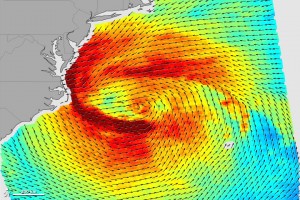The scenes of devastation and wreckage that Hurricanes Sandy (2012) and Katrina (2005) left behind were tragically similar. Both storms flooded major cities, cut electric power to millions, and tore apart densely populated coastlines. But from a meteorological perspective, the storms were very different.
Katrina was a textbook tropical cyclone, with a compact, symmetrical wind field that whipped around a circular low-pressure center. Like most tropical cyclones, Katrina was a warm-core storm that drew its energy from the warm waters of the tropical Atlantic Ocean. Sandy had similar characteristics while it was blowing through the tropics. But as the storm moved northward, it merged with a weather system arriving from the west and started transitioning into an extratropical cyclone.
Read full story at:
Earth Observatory, February 2013









